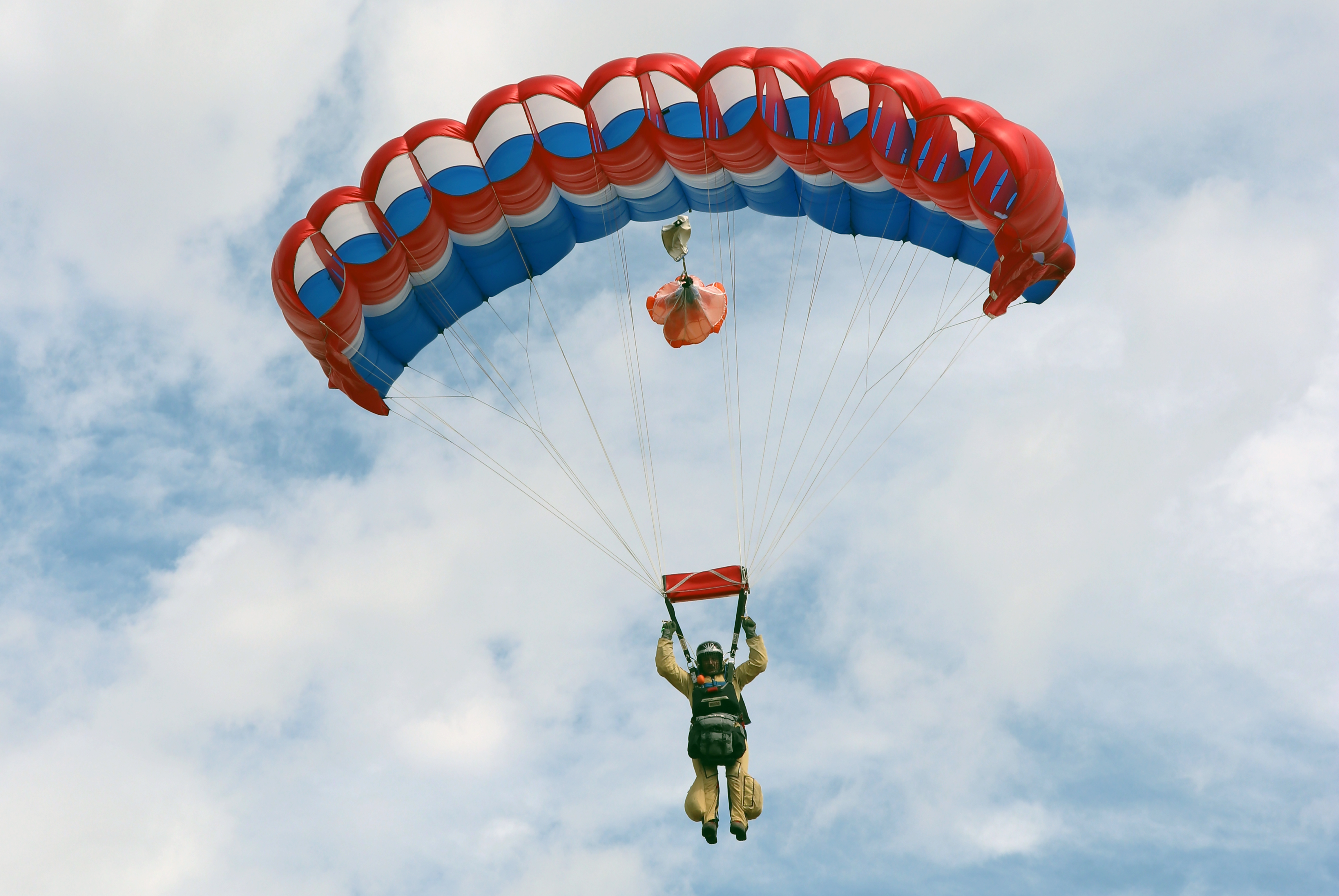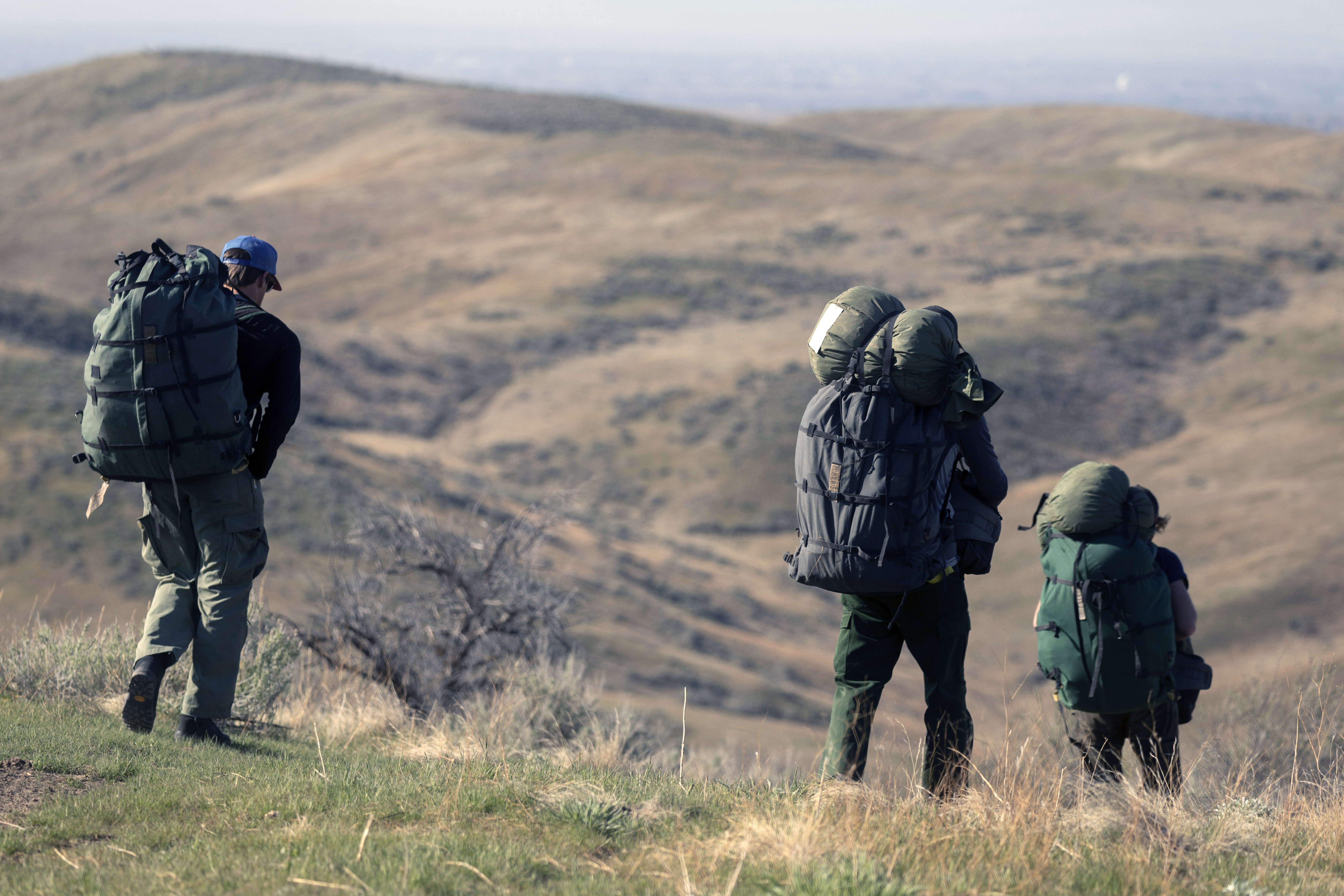Great Basin Smokejumpers
It’s a safe bet that no smokejumper ever complained about a boring commute to the worksite.
Forget a car, pick-up, bus or even bicycle. Smokejumpers, among the most highly trained and skilled of all wildland firefighters, get to their worksite by bailing out from an airplane 3,000 feet up. They land close to the wildfire, gather their gear, make a plan, then go to work putting out the fire.
The genius of smokejumping is it allows firefighters quick access to wildfires. Their function represents a basic firefighting theory: All wildfires start small. Keep them small by quickly attacking them, and they never get the chance to grow into large, dangerous and devastating blazes. Smokejumpers often are dispatched to wildfires in remote areas, inaccessible to other firefighters. Smokejumping is physically and mentally demanding. It requires an extensive knowledge of fire behavior, firefighting skills, the incident command system and parachuting, which is taught after a candidate is selected for the program. In a typical year, more than 100 experienced firefighters apply for jobs with the BLM Great Basin Smokejumpers. Usually, eight to ten are selected as jumpers, and that’s only after vigorous and intense training.
Smokejumpers must be in great shape to jump from a small airplane with 90 pounds of gear, and later pack more than 120 pounds of equipment over rugged terrain. The added pounds come from cargo drops by the aircraft - boxes containing food, waterand firefighting tools – all of which must be hauled out. Each spring, smokejumpers must pass a physical fitness test to ensure they can meet the demands of the job.
Smokejumping in the United States dates from 1939. The first operational fire jump occurred not far from Boise, in the Nez Perce National Forest in northern Idaho. The responsibilities of smokejumpers have expanded through the years. Smokejumpers now are often involved in prescribed fire management, thinning and other hazardous fuels reduction efforts. Not surprisingly, some senior fire officials in the BLM and USFS are former smokejumpers.
Nationwide, there are 450 smokejumpers at nine bases across the country. Seven bases are managed by the USFS, with two operated by BLM. BLM’s Great Basin base employs 75-80 smokejumpers, who may be stationed at NIFC or at one of several sub-bases, depending on the nature of the fire year. Smokejumpers’ safety record is excellent, given the risks. They are not thrill-seekers. They are highly skilled, disciplined, professional firefighters. The BLM Great Basin Smokejumpers regard themselves as a service organization with a commitment to excellent performance every time they’re called upon.
Ask smokejumpers what they like best about their job, and the answer is usually close to the same: They get to work outdoors and enjoy the camaraderie of those they work with.
The job is intense and tough, but you can’t beat the commute.











